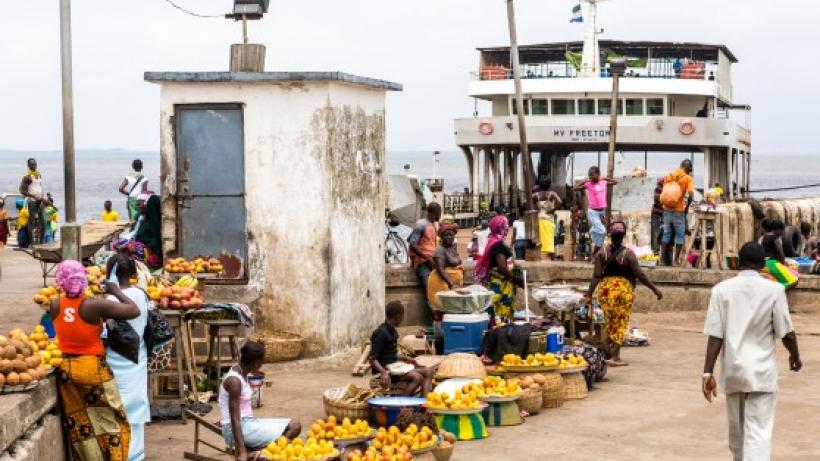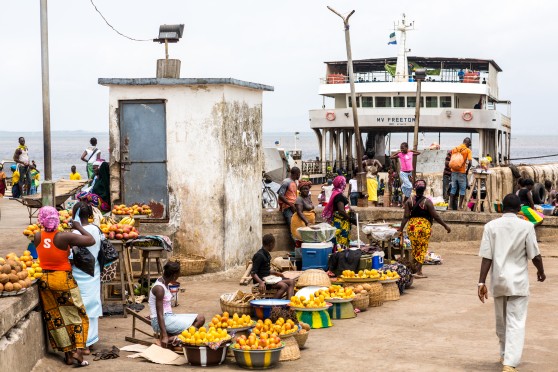
Cross border trading: Sierra Leone and her neighbours
Despite efforts to promote inter-African trade, significant barriers to cross border trade remain throughout much of the continent. Persistent and cumbersome trade barriers drive trade into informality. Official statistics fail to fully capture cross border trading estimates, which contributes to lower levels of tax collection and enforcement of regulations.
In Sierra Leone, it is generally believed that there is a flourishing informal cross border trade among the Mano River Union (MRU) countries, particularly Guinea, Liberia and Sierra Leone. This trade includes among others, agricultural products and manufacturing goods. However, the magnitude is not known as it is largely informal. This lack of information makes it hard to plan appropriate policy measures. It also generates misperceptions. For example, politicians in Guinea, Liberia, and Sierra Leone have complained that their countries are exporting much needed food to neighbours. Many have imposed bans on agricultural trade. It is simply not possible for all three countries to be net exporters of the same commodities within the same trade network. It appears from our work that the bans on agricultural trade have not prevented substantial trade from continuing, although much of it is along informal routes.
In the first step to understanding the magnitude of cross border trade and why so much is informal, we undertook a pilot study at the request of the Sierra Leone Investment Export Promotion Agency (SLIEPA), funded by the International Growth Centre, to assess the reasons, types, nature and level of cross border formal and informal trade occurring at all land crossing points in Sierra Leone with a special emphasis on agricultural trade.
 Vendors at Tagrin Ferry Terminal[/caption]
Vendors at Tagrin Ferry Terminal[/caption]
Image credit: John Seaton Callahan
We randomly selected 12 border chiefdoms with official and/or informal crossing points and interviewed a random sample of traders, community leaders, motor bike riders, and key informants.
The key findings of the study are presented under the following headings:
Trader characteristics
- Overall slightly more than half (51%) of the traders were women. However, there were many more men crossing informal crossing points while women dominated the formal crossing points
- The vast majority (66%) of traders were over 35years old.
- Education levels of traders varied considerably with roughly equal numbers of traders having no schooling (21%), primary school (29), secondary school (22%) and non-formal education (28%)
Border services and facilities
- Generally, the majority (48%) of the traders interviewed are dissatisfied with the services provided at the border posts with only 15% said they are satisfied.
- Principal facility traders are dissatisfied with the following service aspects (or lack thereof): toilets (61%); health clinics (61%); roads networks leading to the post (59%); and water supply (50%)
- However, a very significant proportion (77%) said they are satisfied with the banking facility.
Drivers of informality
- Tax rate: Of the traders surveyed, 48 percent perceived the tax rate to be too high and therefore could not afford to pay; thus they consider informal practices at the formal border posts or even use unofficial crossing routes. Other important reasons for informal trade include: formal border crossings are too far from business areas (13%), unfair tax system (18%). Very few (4%) view informal trade as being easy to do.
- In the case of palm-oil and rice, the ban on exportation from Sierra Leone might have triggered the increase in informal trade for these products to the neighbouring countries of Guinea and Liberia.
bans on agricultural trade have not prevented substantial trade from continuing, although much of it is along informal routes.
- Other major challenges mentioned by traders during cross-border trade include multiple arbitrary charges and the loss of goods accounting for 30 and 26 percent respectively; too many checkpoints along the roads where traders pay informal taxes and bribes (19%), imprisonment and detention (6%), ambushes and robbers (6%), and sexual harassment (5%).
Increasing numbers of formal and informal border crossing points make trade volumes hard to monitor
- The study revealed that a large volume of trade (both formal and informal) exists between the three Mano River Union countries (Guinea, Liberia and Sierra Leone). However, many customs posts do not collect data on imports and exports, and for those that do, like Gbalamuya and Jendema, collection is done manually and, as a result, data lack reliability.
- The study also revealed that Sierra Leone remained a major exporter of gari (processed cassava) to Guinea and Liberia. It is the commodity with the largest volume and frequency of export across the border to Guinea and Liberia. Other agricultural commodities with high volume and frequency of export include: kola nut, sweet potatoes, spices, and palm kernel
- Sierra Leone is a net importer of manufactured durable goods, unshelled ground nut, dried pepper, pineapple suckers, beans, fresh tomatoes, bennie seeds, and onions, from Guinea and Liberia the study revealed. In 2015 new agricultural commodities such as Nerica Rice L19-L20, shelled ground nut, and Irish potato have added to the list of imports from Guinea.
- In the chiefdoms surveyed, no flow from Sierra Leone for cocoa was observed or reported. Rather, large quantities of cocoa are brought in from Liberia, presumably due to the relatively high farm-gate prices in Sierra Leone. Due to the lack of enforcement of grading and standardisation in the cocoa industry in Sierra Leone, all grades of cocoa carry the same price. Thus, the international quality rating of cocoa from Sierra Leone could be under threat as most cocoa that enters or is smuggled into the country is of low grades, according to one produce agent. Additionally, the poor road network from production areas within Liberia close to Monrovia, forces Liberian cocoa farmers to sell into Sierra Leone.
Generally, the study revealed that there is a flourishing cross border trade (formal and informal) between Sierra Leone and her neighbours (Guinea and Liberia). This is largely attributed to high tax rate, multiple arbitrary charges, loss of goods, informal tax payments and bribes among others. It was observed that gari is the main export from Sierra Leone while the country is a net importer of manufactured goods. We are hopeful that the detailed study (scheduled to commence later this year) will provide the details of the volume of goods traded.

